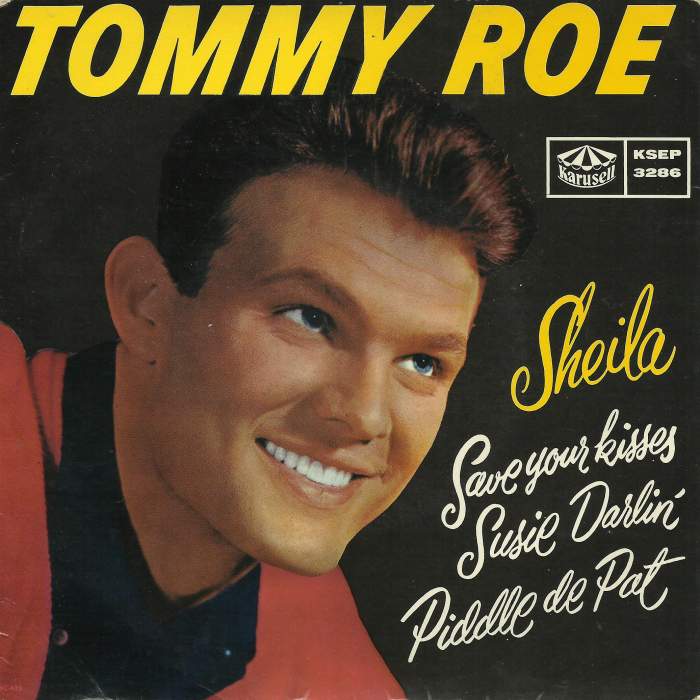In The Number Ones, I'm reviewing every single #1 single in the history of the Billboard Hot 100, starting with the chart's beginning, in 1958, and working my way up into the present.
Tommy Roe - "Sheila"
HIT #1: September 1, 1962
STAYED AT #1: 2 weeks
It's entirely possible that you've never heard of Tommy Roe, but he hit #1 twice, and he did it years apart. The second time was with "Dizzy" in 1969, and that's one of the foundational records of the late-'60s and early-'70s bubblegum-pop boom. "Bubblegum" gets used as a slur, but the music that gave the genre its name fucking rules -- hired-killer songwriters and '60s-garage knuckleheads using whatever weird production techniques and canny hooks they could find to mash pleasure receptors as hard as possible. So with "Sheila," his first #1, Roe was essentially making bubblegum pop before it had a name.
https://youtube.com/watch?v=KNVFZHWSHwc
The Atlanta-born Roe was still working as an electrician when "Sheila" hit #1, and his bosses at RCA reportedly had to advance him $5000 to get him to quit his General Electric job and go out on tour. Roe had been cranking out singles for a couple of years before "Sheila," but the song still sounds like the work of someone who wasn't a professional and who had no real aspirations to become professional. Whereas most of the songs that hit #1 during that era have strings and backing harmonies sweetening everything about them, "Sheila" is exactly the sort of thing you'd hope a weekend-warrior electrician who was also secretly a great hooksmith might come up with.
Everything about "Sheila" is sonically weird. Roe wanted it to sound like Buddy Holly, and it sort of does. The Holly echoes are all over it, but Holly was three years dead in 1962, and music had moved on quickly, so Roe's song sounds both like a throwback and like a transmission from some imaginary future. "Sheila" is weirder than anything Holly made, and Holly's records were plenty weird in their own ways.
There's the tribal pitter-patter of the "Sheila" drums, which automatically make it sound a whole lot more raw than everything around it. There are the echoing, reverb-drenched guitars, which swirl and sparkle. And there's Roe's voice, a deep twang that turns his vowels into different vowels: "Her nyyyme drives may insyyyne." Versions of those sounds were all there on Holly's "Peggy Sue," but Roe blows them out to almost psychedelic extremes. It's a sweet and meaningless little trifle of a love song, but it's also a sharp and deadly collection of hooks, and every moment of it feels heavy and dreamy in equal measures.
GRADE: 8/10
BONUS BEATS: It's a scientifically proven fact that nobody has ever written a bad song about a caveman. Roe recorded one in 1960, when he was 18, and it's simply called "Caveman." Here it is:






